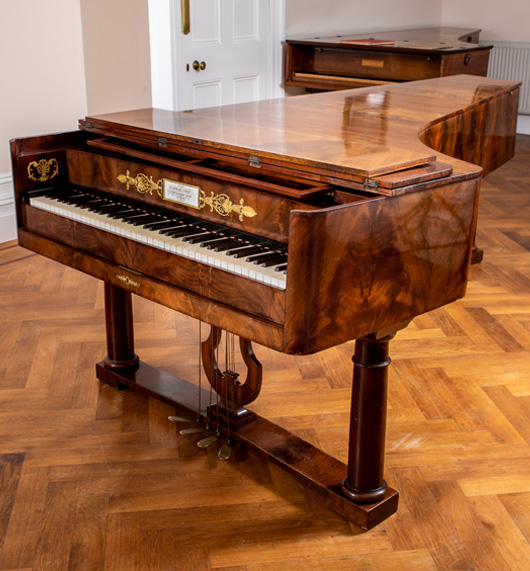Grand piano by Conrad Graf, Vienna, 1826
Compass: CC - f ''''
Viennese action.
Pedals for due corde, faggotzug (bassoon effect), moderator and dampers.
Compass: CC - f ''''
Viennese action.
Pedals for due corde, faggotzug (bassoon effect), moderator and dampers.

Conrad Graf, like the harpsichord builder Jacob Kirckman, married his master’s widow to become the sole director of a keyboard instrument manufactory and similarly went on to become a very wealthy art collector. At its height, Graf ran a large and profitable enterprise in the Wieden district of Vienna, which included accommodation for himself and some of his workforce. A testament to his renown is the inscription on the enamel nameboard etiquette fitted above the keyboard of this piano that styles him as piano maker to the Imperial Court. Helped, no doubt, by royal patronage, Graf’s success was probably more the result of well-regulated manufacturing processes and a specialised division of labour. Whilst his workshop practices might have been of the moment and his attitudes towards his employees comparatively progressive, his instruments are surprisingly conservative in design, retaining something of the traditional sound characteristics of the earlier Viennese instrument. An innovative approach, however, to the wooden structure and casework of his instruments allowed for greater string tension without the addition of metal reinforcement, providing the increased power and sonority demanded by contemporary music, without compromising a bell-like clarity. Beethoven, Liszt, Chopin and Clara Schumann all played Graf pianos and this instrument retains a number of rare period, or possibly even original, strings.
There's nothing remarkable about it. All one has to do is hit the right keys at the right time and the instrument plays itself
Johann Sebastian Bach